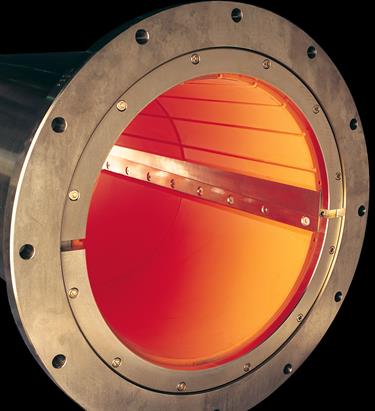(BURLINGTON, Ontario) — A recent inspection of the 20-year-old water-lubricated propeller shaft bearings installed on a twin-screw cruise ship were found to be within classification society parameters and suitable for continued use for a further 10 years of operation.
At the shipowner’s request, Thordon Bearings – a leader in water-lubricated bearing technologies – attended the docking in Brest, France, to assess the propeller shaft liners and outboard bearings of a 2,500-passenger-capacity cruise ship. The award-winning COMPAC bearings were installed in 1999.
“After more than 02 years of service and 6,100 annual operating hours, bearing clearances were significantly below Lloyd’s Register’s 10.5 millimeter (0.41 inches) maximum allowable clearance. The maximum clearance recorded was 7.34 mm (0.29 inches) on a starboard shaft bearing. The vessel could potentially operate these same bearings for another ten years,” said Jeffrey Butt, Thordon’s business development manager – marine.
The condition of the 83,000-gt vessel’s shaft liners – themselves indicative of successful bearing performance – was equally impressive.
Gus Juarez, Thordon Bearings’ technician from the Global Service & Support team involved in the inspection, said: “There were some minor circumferential marks on the shaft liners, but they looked well-polished. There was no indication of circumferential grooving or damage. All liners were determined to be in satisfactory shape.”
Copies of all the inspection videos were provided to the Lloyd’s Register surveyor and shipowner representatives following the October dry-docking.
According to Butt, the reliability and near-obsolescent maintenance requirement of a seawater lubricated shaftline is one of the main reasons why the cruise sector increasingly favors a conventional propeller shaft arrangement over a podded propulsion system.
“We have accumulated data over the past eight years revealing more than 25 incidents where the pod failures resulted in cancelled or changes to cruise itineraries. I know one vessel that has been in and out of dry dock five times in the past eight years, resulting in 55 itinerary changes, two cancelled sailings, several shortened port stays, and thousands of dollars in compensation. You don’t seem to have this kind of bother with a shafted ship.
“Compared to pods, a ship fitted with COMPAC has an enviable track record. Performance, reliability and environmental sustainability is unmatched,” he said.
The shaft inspection at the Brest yard is the second cruise ship to emerge from a dry-docking with a Thordon bearing in near perfect condition after decades of operation.
In September 2015, during the inspection of a sister ship, surveyors recorded a bearing wear down of 7 mm (0.28 inches). This was 17 years after the system was installed.
“Based on our cruise installations to date, a seawater-lubricated propeller shaft system typically has a wear-life of 25 years, saving millions in maintenance costs and emergency repairs,” said Craig Carter, director of marketing and customer service, Thordon Bearings. “There are no lubricants to purchase, no service contracts to sign, reduced maintenance budgets and zero pollution risk.”
Thordon has supplied water-lubricated bearing systems to cruise ships operated by, among others, Princess Cruises, Seabourn, Disney Cruises, Viking Cruises, MSC Cruises, P&O Cruises, Oceania, and Regent Seven Seas.

